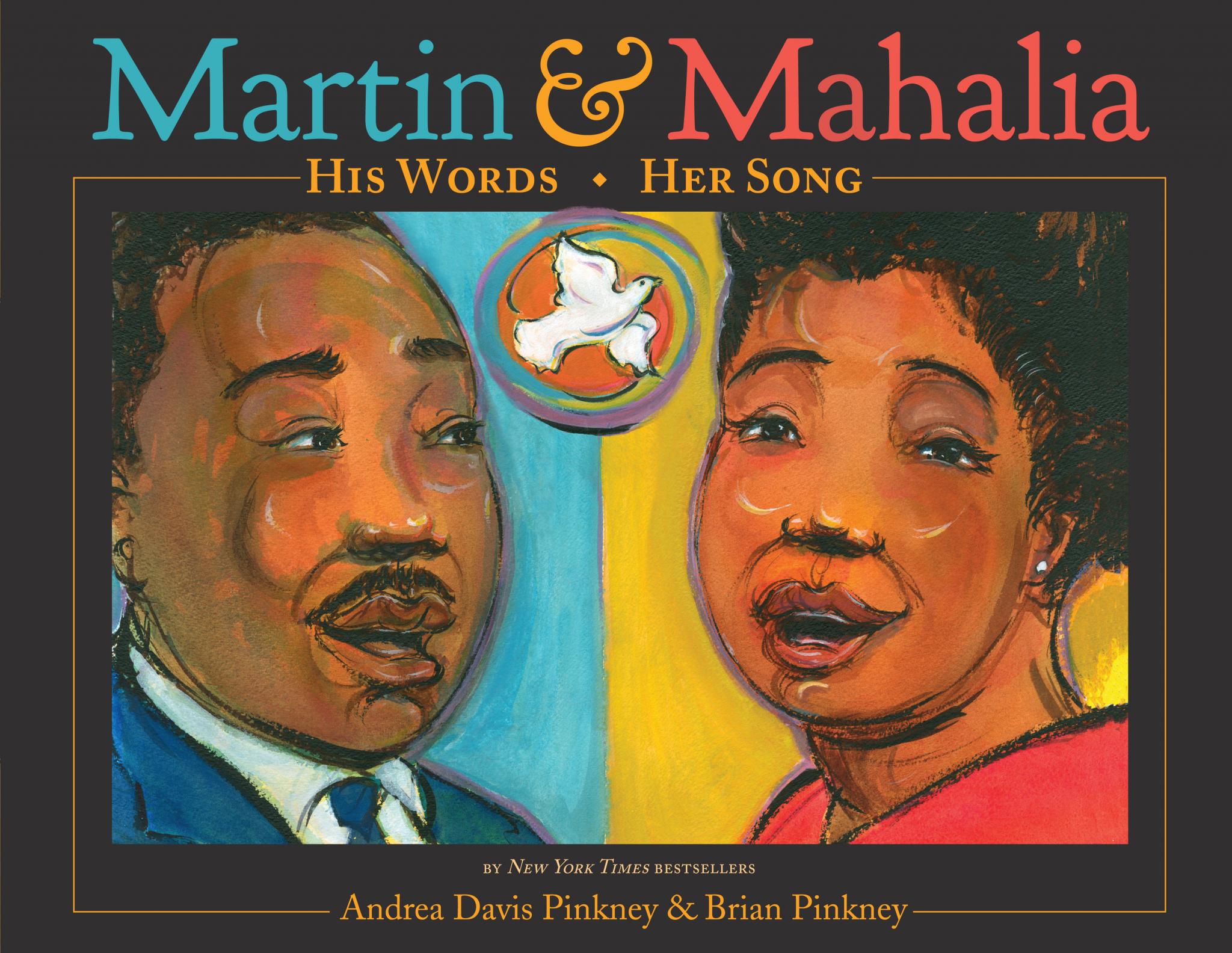
One of the little known facts about the Civil Rights Movement is that Martin Luther King Jr. and Mahalia Jackson were great friends. They also worked tirelessly together to spread the message of equality. Although their gifts were different, King a rising star preacher and Jackson the queen of gospel, the two united on many occasions—most famously at the March on Washington on August 28, 1963, at which Jackson inspired King to go off his planned speech and express his “dream.”
ESSENCE.com caught up with Andrea Pinkney and Brian Pinkney, the author and illustrator of the children’s book Martin & Mahalia, to discuss the importance of King and Jackson’s friendship and what parents can teach their kids about the anniversary.
ESSENCE.com: Out of all the stories of the Civil Rights Movement to tell, why did you decide to pick this one?
ANDREA PINKNEY: The March on Washington is one of the most pivotal moments in the history of the movement. It is a moment when not only we came together as a people, but for Martin and Mahalia, it was two friends with powerful voices that really ignited a change. Each grew up in the tradition of the Black church. Martin Luther King Jr., of course, in the Ebenezer Baptist Church in Atlanta, watching his father, a preacher, as a child before he himself grew to be a powerful preacher and using the power of his voice. Mahalia Jackson grew up in New Orleans, singing in the choir and really honing her vocals there. Later in their lives, they came together as friends and used their vocal powers to ignite a movement.
ESSENCE.com: This book is aimed at children, were you at all worried about oversimplifying the story for a young reader?
ANDREA PINKNEY: This is a story of course about Civil Rights, but it’s also about friendship and when we were doing the research it was just so heartwarming to see that they were friends. It was Martin who invited his friend Mahalia to join him on August 28, 1963 to come to the March on Washington. It was during his speech, as he started to read from prepared remarks, that his friend Mahalia turned to him and said ‘Tell them about your dream, Martin.’ That was what really inspired Martin to depart from his prepared remarks and launch into his “I Have a Dream” speech, as we know it today. So I speak about the power of friendship and what that could bring.
ESSENCE: The book is released 50 years after the original march. How do you think the current march mirrored or differed from the original?
ANDREA PINKNEY: People coming together in unity for a cause never goes out of style. It is a universal phenomenon and in the book there is the refrain that says ‘You are here.’ That refrain comes from maps that were given to Civil Rights marchers in 1963. There’s a mapping scene in the book. You are here, ‘Let the dove lead the way.’ We are here in 2013. We are here as a people. We are here together in unity.
BRIAN PINKNEY: There was a map that was given out at the original march and I used that in some of the artwork and I also used the image of a dove as a beacon of hope.
ANDREA PINKNEY: We believe that that dove is a spirit guide moving us all forward in unity and that is the same today as it was back then.
ESSENCE: Some of the kids reading the book may not understand the same struggles that Martin and Mahalia fought for at that time. What can parents teach their kids about our current struggle in the context of the anniversary?
BRIAN PINKNEY: I think children are learning about the Civil Rights movement, they do understand that equality was the struggle we were going through 50 years ago. Today, those things are a little more subtle. But at the same time, the principles still remain the same. We still want to be equal, we all want to be treated fairly and coming together and talking about this and reading about this is going to help everyone.
ANDREA PINKNEY: Think about what young people today hear about Civil Rights. Going back to Martin and Mahalia and as it said in the book, ‘You are here,’ which led to ‘We shall overcome,’ which led to ‘Yes, we can.’ So what we need to tell young people today is that we can all continue to affirm equality in many forms and that it’s through the simple use of our voices that we can affirm equality.
ESSENCE.com: Are you guys planning to tell any other stories of the Civil Rights Movement?
ANDREA PINKNEY: There are many stories of the Civil Rights Movement that we are really looking forward to telling.
BRIAN PINKNEY: We’re always looking for projects. We get inspired in many different ways as creative people and we foresee that we’ll be doing a few more books around the Civil Rights Movement. There are so many details that people don’t know about.
“Martin & Mahalia” is out now. Click here for more information.





